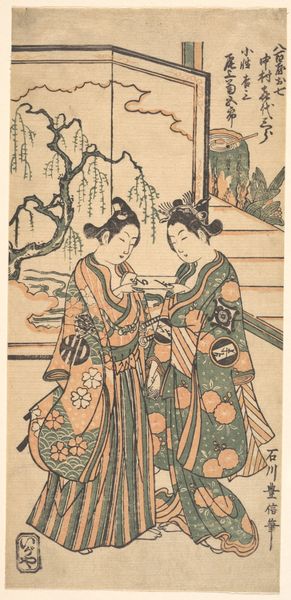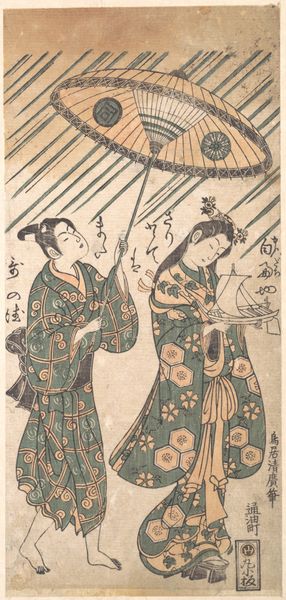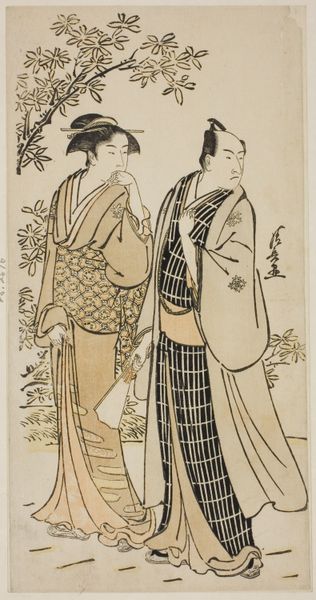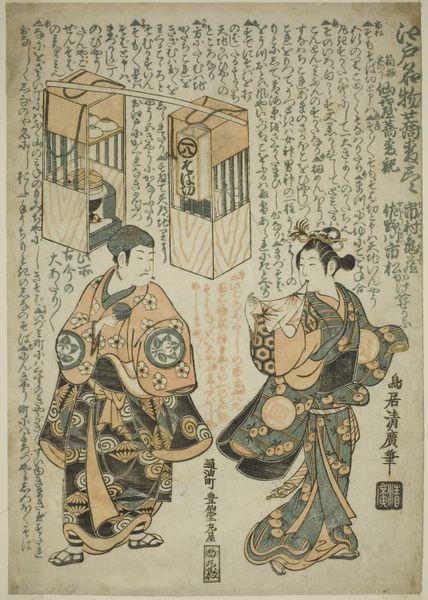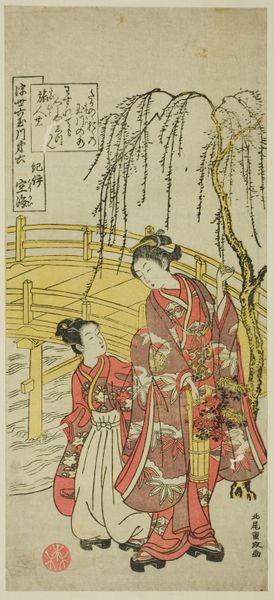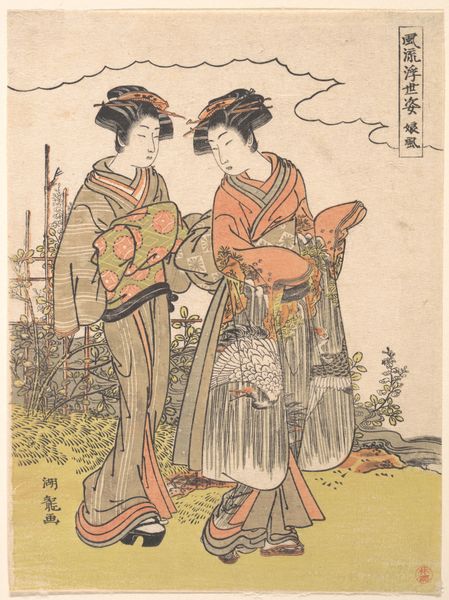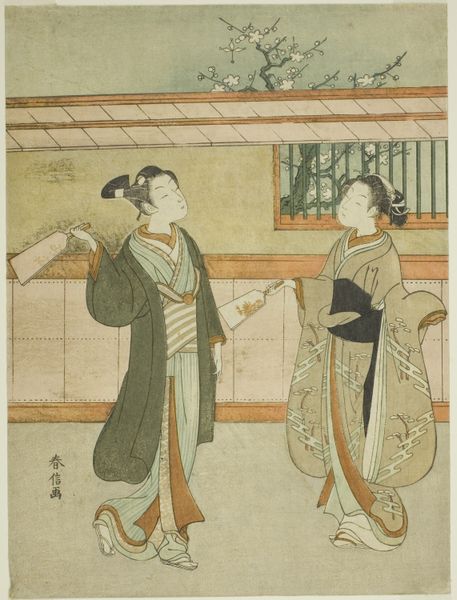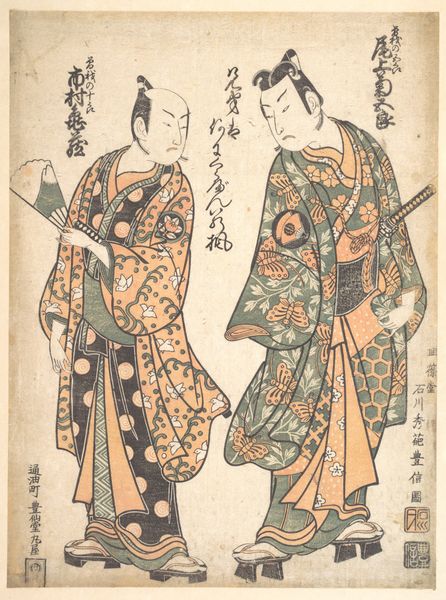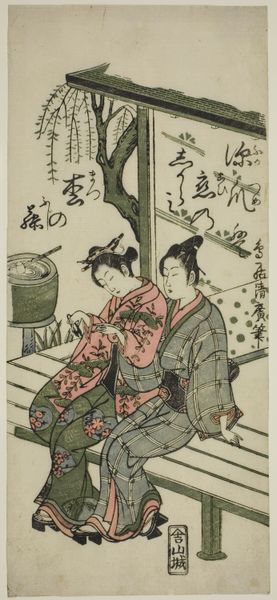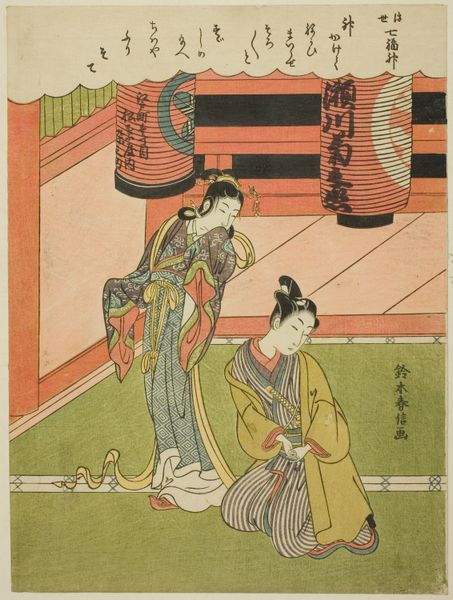
The Actors Sanogawa Ichimatsu I as Oshichi and Nakamura Kumetaro I as Kichisaburo in the play "Izu Kosode Shobai Kagami," performed at the Nakamura Theater in the second month, 1751 1751
0:00
0:00
print, woodblock-print
# print
#
asian-art
#
ukiyo-e
#
japan
#
figuration
#
woodblock-print
#
genre-painting
Dimensions: 12 1/2 × 5 5/8 in.
Copyright: Public Domain
Editor: This color woodblock print by Ishikawa Toyonobu from 1751 depicts two actors, Sanogawa Ichimatsu and Nakamura Kumetaro. The figures are elaborately dressed. The overall mood seems very formal and theatrical, maybe even a bit secretive. What stands out to you in terms of symbolic representation? Curator: Immediately, my eye is drawn to the items the figures hold: a letter adorned with cherry blossoms and a small sword or dagger. These aren’t simply props. The cherry blossom, fleetingly beautiful, often symbolizes the ephemeral nature of life in Japanese art, hinting perhaps at the transient nature of fame or love within the play. And the sword – what does that signify in your mind? Editor: Danger? Authority? It feels out of place with the flowers. Curator: Precisely. The combination is deliberately unsettling. These objects point toward emotional and dramatic currents running beneath the surface of a seemingly polite interaction. Consider the patterned kimonos: the contrasting geometric shapes versus the naturalistic floral motifs create a visual tension, representing the push and pull between societal expectations and individual desires. It prompts us to think about these performers within the play's context, but also the layers of cultural meaning viewers at the time would have immediately understood. What connections do you see? Editor: It is intriguing how seemingly decorative choices point towards hidden narratives. Thank you! Curator: My pleasure. By examining these layers of symbolism, we uncover the cultural memory embedded within the print itself.
Comments
No comments
Be the first to comment and join the conversation on the ultimate creative platform.
